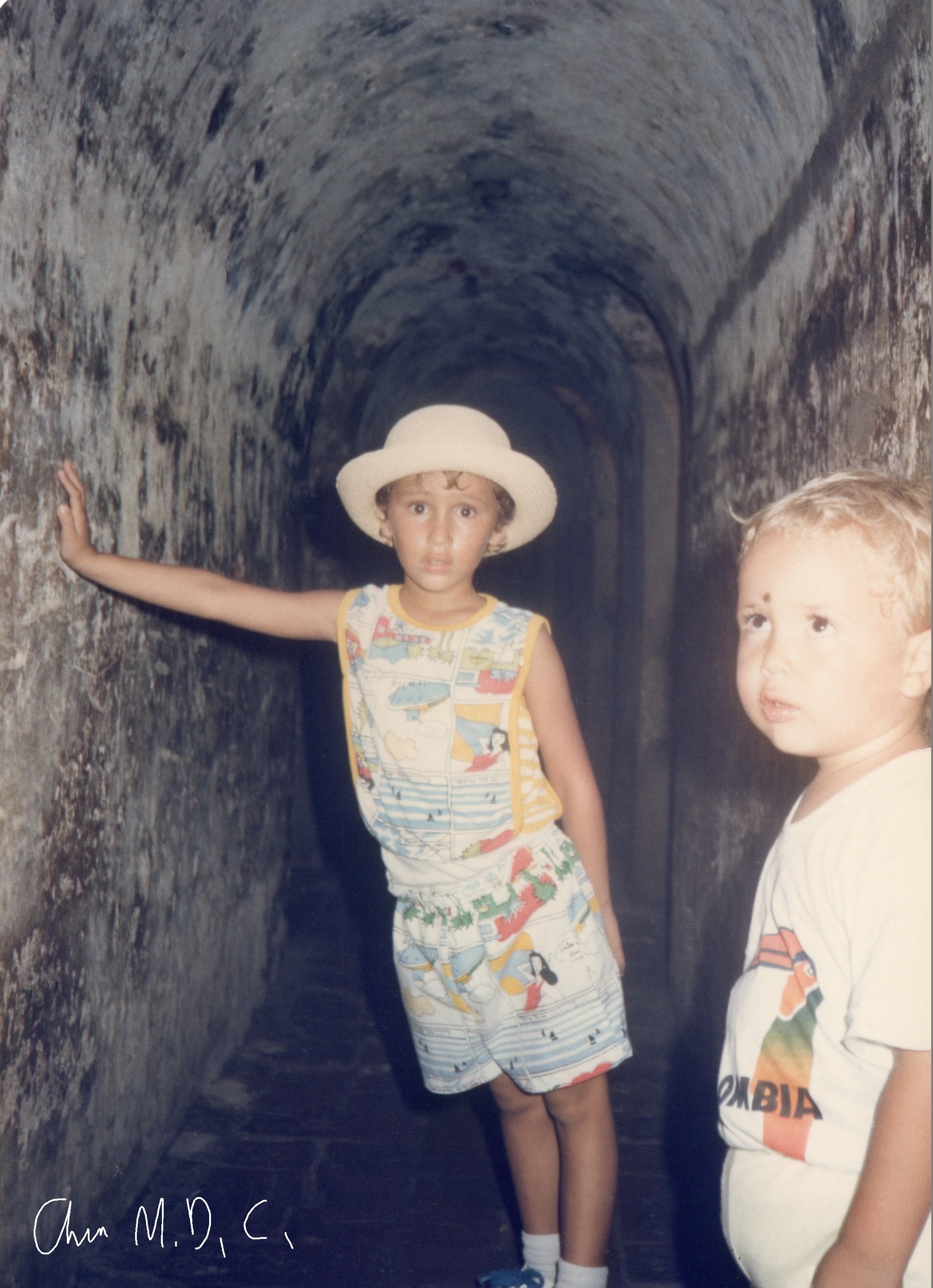32 Imperfect or past routines
There are two ways to talk about the past: the preterit and the imperfect. The imperfect works to mark that the past action was repeated or was a routine. The imperfect works to talk about past routines. In English you express this using words “used to”, but in Spanish you need to add an ending to the verb to express the same thing.
Conjugations in Imperfect are only divided into two: those ending in AR, and those ending in ER and IR. The first person singular is exactly equal to the third person singular. Those ending in AR pick ABA, and those ending in ER or IR pick ÍA. Stress goes on the last part of the stem.
| cantar | comer, dormir | |
| Yo | cantaba | comía, dormíamos |
| Tú | cantabas | comías, dormíamos |
| Él / ella / usted | cantaba | comía, dormíamos |
| Nosotros / Nosotras | cantábamos | comíamos, dormíamos |
| Ellos / ellas / ustedes | cantaban | comían, dormíamos |
The accent mark in “dormía” states that the syllable division is dor-mí-a and not dór-mia.
Sample conversations:
Your childhood routines
A: ¿Qué hacías los sábados por la mañana cuando eras niño OR niña?
B: Cuando yo era niño OR niña, yo _______________
A: ¿Qué hacías los domingos por la mañana cuando eras niño OR niña?
B: Cuando yo era niño OR niña, yo _______________.
Mirar Televisión (=watch TV), add TV program – imperfect: miraba
Jugar con ___________ (=play with), add name of person – imperfect: jugaba
Montar Bicicleta (=to ride a bike) – imperfect: montaba
Dormir (=to sleep) – imperfect: dormía
Pintar (=to pain) – imperfect: pintaba
Salir (=to go out) – imperfect: salía
ADD TWO VERBS MORE
Talking about old artists when they were young
Check in your phones pictures of the following artists when they were young:
- Madonna
- Christina Applegate
- Shakira
- Brad Pitt
- Brendan Fraser
- Axel Rose
A: ¿Cómo era __________ cuando estaba joven?
B: Él OR ella era __________, _____________ y ______________ (add adjectives).
Intermediates, Advanced and Native speakers of Spanish should add:
A: ¿Cómo es él OR ella ahora?
B: Él OR ella es __________, _____________ y ______________ (add adjectives).
A: ¿Qué hacía cuando estaba joven?
B: Él OR ella ______________ (actuar=act, cantar=sing, tocar=play, bailar=dance).
Describing someone else from the past
I have included a picture of me and my brother when we were children in a trip to Cartagena where we visited the castle of San Felipe.
To describe something from the past, use the imperfect ERA for singular or ERAN for plural (verbo ser), ESTABA or ESTABAN (verbo estar), and LLEVABA or LLEVABAN (verbo llevar, to wear).
- Me: Ana
- My brother: Luis
A: ¿Cómo era Ana cuando era niña?
B: Ella era ___________ y _______________. Tenía pelo ______________ y _______________.
A: ¿Cómo era Luis cuando era niño?
B: Ella era ___________ y _______________. Tenía pelo ______________ y _______________.
A: ¿Dónde estaban Ana y Luis en la foto? (=Where were they located in the picture?)
B: Ellos estaban en ________________ de San Felilpe.
A: ¿Cómo estaban? (=How were they feeling?)
B: Ellos estaban _________________ (add feeling they reveal).
A: ¿Qué llevaban puesto? (=What were they wearing?)
B: Ana llevaba ________________ y _________________. Luis llevaba ________________ y ___________________.

Intermediates, Advanced and Native speakers of Spanish should add:
Exchange turns for the next picture. We were located on a street in Cartagena:
A: ¿Cómo era Ana cuando era niña?
B: Ella era ___________ y _______________. Tenía pelo ______________ y _______________.
A: ¿Cómo era Luis cuando era niño?
B: Él era ___________ y _______________. Tenía pelo ______________ y _______________. Tenía un ____________ (add a skin feature if you can spot it).
A: ¿Dónde están Ana y Luis?
B: Ellos están en ________________ de Cartagena.
A: ¿Qué hay en el fondo? (=What’s in the background?)
B: Hay ____________________________ (describe the houses).
A: ¿Qué llevaban puesto? (=What were they wearing?)
B: Ana llevaba ________________ y _________________. Luis llevaba ________________ y ___________________.

